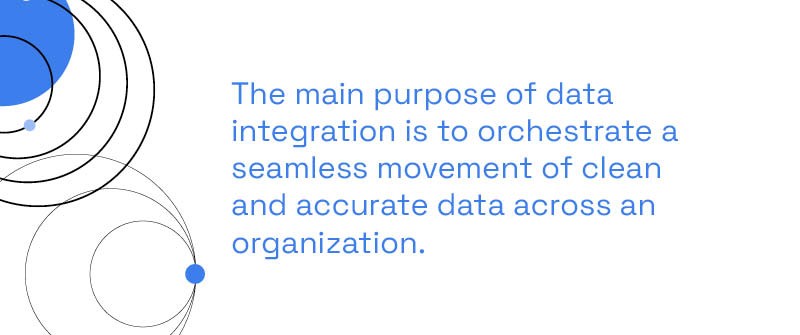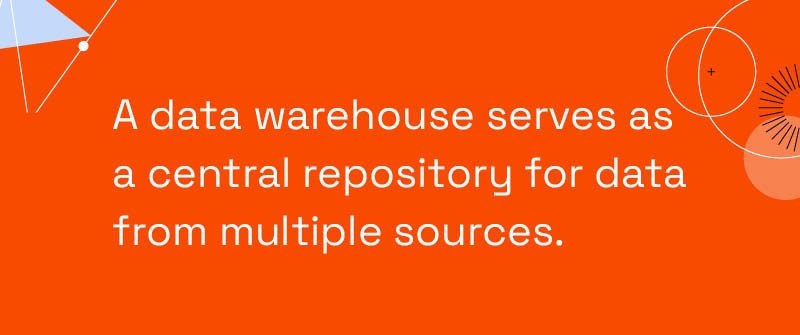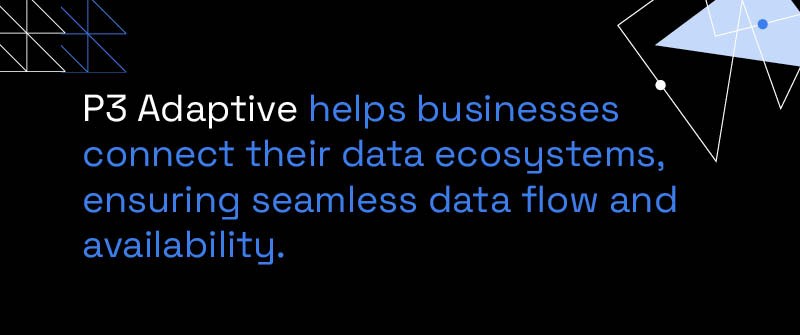
Understanding data integration and API integration can empower enterprises to harness their data assets effectively. While both processes involve coWhat Is The Main Purpose Of Data Integration?
In a landscape where data is as valuable as currency, the main purpose of data integration is to unify data from multiple disparate sources into a single cohesive view. The benefits of data integration include improved organizational efficiency and decision-making, as it provides a unified view that enhances sales, customer satisfaction, and operational effectiveness. This process not only facilitates more accurate analytics but also enhances the strategic decision-making process. Without integration, businesses face the chaos of data silos, where each department holds isolated pieces of information that don’t communicate with others.
By integrating data, Business Intelligence Consulting Services from P3 Adaptive enables organizations to generate insightful and comprehensive stories from their otherwise fragmented data sets. This ability to see a unified picture ensures that every business leader can base their decisions on a foundation of complete and accurate information.
Understanding the Role of Data Integration
Data integration takes on the crucial task of aggregating varying data sets into unified models. This clears the path to advanced analytics, enabling teams to derive insights quickly across departments and enhancing business processes by supporting operational efficiency and decision-making. Such integration is critical in today’s fast-paced environment, providing agility not just in operations but also in strategy development.
P3 Adaptive’s Approach
At P3 Adaptive, we harness powerful data integration techniques to merge data flawlessly. A robust data integration strategy is crucial to align integration efforts with business goals and overall IT strategy. Our skilled team employs various methodologies to align and reconcile data, ensuring it enters your systems in its most usable form. By doing so, we empower businesses with a streamlined flow of information, fostering an ecosystem ripe for innovation and growth.
Practical Examples in Business Contexts
Consider a retail business that gathers customer data from POS systems, online orders, and marketing interactions. By combining data from these various sources, data integration creates a cohesive and reliable dataset, painting a holistic picture of customer behavior, preferences, and trends. This approach not only aids targeted marketing strategies but also enhances customer service by anticipating needs.
The main purpose of data integration, therefore, is to orchestrate a seamless movement of clean, accurate data across an organization, ultimately resulting in enhanced organizational intelligence and efficiency.

What Is The Primary Purpose Of System Integration?
The Significance of Integrating Various Data Systems for Operational Efficiency
In an era where data deluge is the norm, the primary purpose of system integration within businesses is to harmonize disparate systems, enabling seamless data flow and enhanced operational efficiency. However, organizations often face significant data integration challenges, such as managing diverse data sources, handling the increasing volume of data, and navigating organizational change. This process not only bridges the gap between isolated data silos but also empowers decision-makers with a holistic view of business operations. Integrating different systems ensures that critical data is readily available and actionable, providing a unified platform for strategy formulation and execution.
Data Integration vs. System Integration: What’s the Difference?
Though often used interchangeably, data integration and system integration serve distinct yet complementary purposes in a modern enterprise.
Data integration focuses on bringing together information from different sources—think CRM tools, marketing platforms, databases—into a unified and coherent view. The goal is simple: to make data accessible, consistent, and ready for analysis.
System integration, on the other hand, connects entire applications or platforms so they work in harmony. It ensures that different tools and technologies across departments—like ERP systems, payroll software, or inventory management platforms—can communicate with each other, enabling a seamless flow of information.
In short:
- Data integration unifies the data itself.
- System integration unifies the systems that house and move that data.
Both are essential for eliminating silos, driving efficiency, and empowering your teams with reliable, real-time insights.
Methods and Data Integration Tools Employed by P3 Adaptive to Streamline System Integration
P3 Adaptive leverages advanced data integration tools and a suite of data integration techniques to facilitate seamless system integration. Data mapping plays a critical role in automating integration tasks and enhancing data quality. By employing a robust methodology that includes ETL (Extract, Transform, Load) processes, API integration, and cloud-based solutions, P3 Adaptive helps businesses achieve a comprehensive data ecosystem. Our consulting services focus on tailoring integration strategies to align with organizational goals, ensuring a smooth transition and improved system interoperability.
Breaking Down Integration Methods: How It Actually Works
Behind every successful data integration strategy are core processes that ensure your data is not just collected—but clean, structured, and actionable. At P3 Adaptive, we focus on three foundational techniques:
- ETL (Extract, Transform, Load): This process pulls data from various sources (Extract), converts it into a usable format (Transform), and moves it into a centralized system like a data warehouse (Load). It’s ideal for batch processing and analytics.
- ELT (Extract, Load, Transform): A variation of ETL that’s especially powerful in cloud environments, ELT loads raw data first and then transforms it within the destination system, offering greater flexibility and scale.
- API Integration: APIs (Application Programming Interfaces) allow real-time data transfer between platforms. This method is ideal for syncing live data across systems like CRMs, eCommerce platforms, or SaaS tools.
- Data Mapping & Standardization: We ensure every piece of information—from a customer’s name to a sales figure—lands in the right place, in the right format, and with the right context.
These methods work together to ensure your data pipeline runs like a well-oiled machine—accurate, fast, and ready for action.
Impact of System Integration on Improving Data Quality, Accessibility, and Decision-Making
The impact of effective system integration cannot be overstated, as it significantly improves data accessibility across departments. Ensuring high data quality is crucial for making accurate business decisions and maintaining the integrity of integrated data. This transformation allows for real-time data visibility, fostering agility in decision-making and creating a competitive edge. Businesses can anticipate market changes and respond proactively, driven by insights derived from integrated data systems. P3 Adaptive’s approach to system integration ensures that clients not only centralize their data but also maximize its utility, paving the way for data-driven innovations and strategic growth.
What Is The Primary Purpose Of Data Integration And Data Warehousing In Database And Research?
In today’s data-driven business world, the effectiveness of an enterprise often depends on how well it can integrate its diverse data sources into a cohesive whole. Data integration within database management systems (DBMS) is essential for unifying and streamlining data access and management. At its core, the primary purpose of data integration in a DBMS is to create a seamless interface that ensures data from various sources is brought together in a way that creates meaningful, actionable insights.
A data warehouse serves as a central repository for data from multiple sources, where various data transformation and loading methods, such as ETL and ELT, are applied to ensure analytics-ready data is available for business intelligence and decision-making.

For database management systems, integration plays a vital role in enhancing the consistency and quality of data across organizational processes. This not only facilitates smooth data operations but also helps in aligning data with strategic objectives by providing a unified view of information. By using advanced data integration techniques, businesses can minimize errors, reduce redundancies, and bolster data accuracy.
When it comes to research, data integration is indispensable. It enables researchers to combine and analyze data sets from different sources and platforms, offering comprehensive insights that can inform strategic decisions. Using real-world data and evidence-based research, enterprises can move beyond intuition, closely evaluating trends and patterns that highlight improvement areas or uncover new opportunities.
P3 Adaptive empowers businesses to harness the full potential of data integration. By enhancing database integration techniques, we provide custom-tailored solutions that fit within your business architecture. Our methodologies allow for seamless data integration, ensuring that your enterprise data is aligned and readily accessible for decision-makers. This approach not only aids in improving the overall efficiency of data operations but also contributes to strategic, evidence-based business growth.
Conclusion: The Business Imperative for Data Integration
Data integration is not merely a technical necessity but a fundamental business imperative. The main purpose of data integration is to synthesize data from various sources, whether it be structured or unstructured, into a single, unified view. This capability is critical for modern enterprises that seek to make informed decisions based on comprehensive insights. By bringing disparate data together, businesses can achieve a holistic view of their operations, thereby enhancing operational efficiency and strategic decision-making.
Recapping Why Data Integration is Critical for Business Success
In an era driven by data, businesses need to leverage integration not only to streamline operations but also to gain a competitive edge. Data integration refers to the process of combining data from various sources into a unified and coherent view, which allows companies to increase flexibility, improve data consistency, and drive faster innovation. By consolidating data into a centralized system, enterprises can eliminate data silos, which in turn leads to enhanced transparency and data accuracy, ultimately driving profit margins and customer satisfaction.
P3 Adaptive’s Role in Transforming Data Integration into Actionable Business Strategies
P3 Adaptive employs robust data integration tools and strategies to transform isolated data sets into actionable insights. Data transformation, including mapping data from different sources, standardizing formats, and resolving inconsistencies, is crucial in preparing data for integration. By utilizing advanced integration techniques, P3 Adaptive helps businesses connect their data ecosystems, ensuring seamless data flow and availability. This strategy not only informs more strategic planning but also enables enterprises to respond agilely to ever-evolving market conditions. Our adept consultants focus on fine-tuning the integration process to fit each client’s specific needs, thereby empowering them with confidence in their data.

Future Outlook on Data Integration Trends and Technology
The future of data integration promises even more sophisticated tools and technologies aimed at enhancing automation, scalability, and intelligence within data ecosystems. Trends such as machine learning and AI-driven data integration are on the rise, offering organizations new ways to process data efficiently with minimal human intervention. P3 Adaptive stands ready to help businesses navigate this landscape, ensuring they remain at the forefront of data innovation.
Unleash your business’s potential by partnering with P3 Adaptive. Our expertise in harnessing the full power of data integration positions us as a trusted ally in transforming your data hurdles into triumphs. With P3 Adaptive, we help you overcome challenges swiftly, equipping you with the strategic edge needed in today’s competitive environment.
Get in touch with a P3 team member